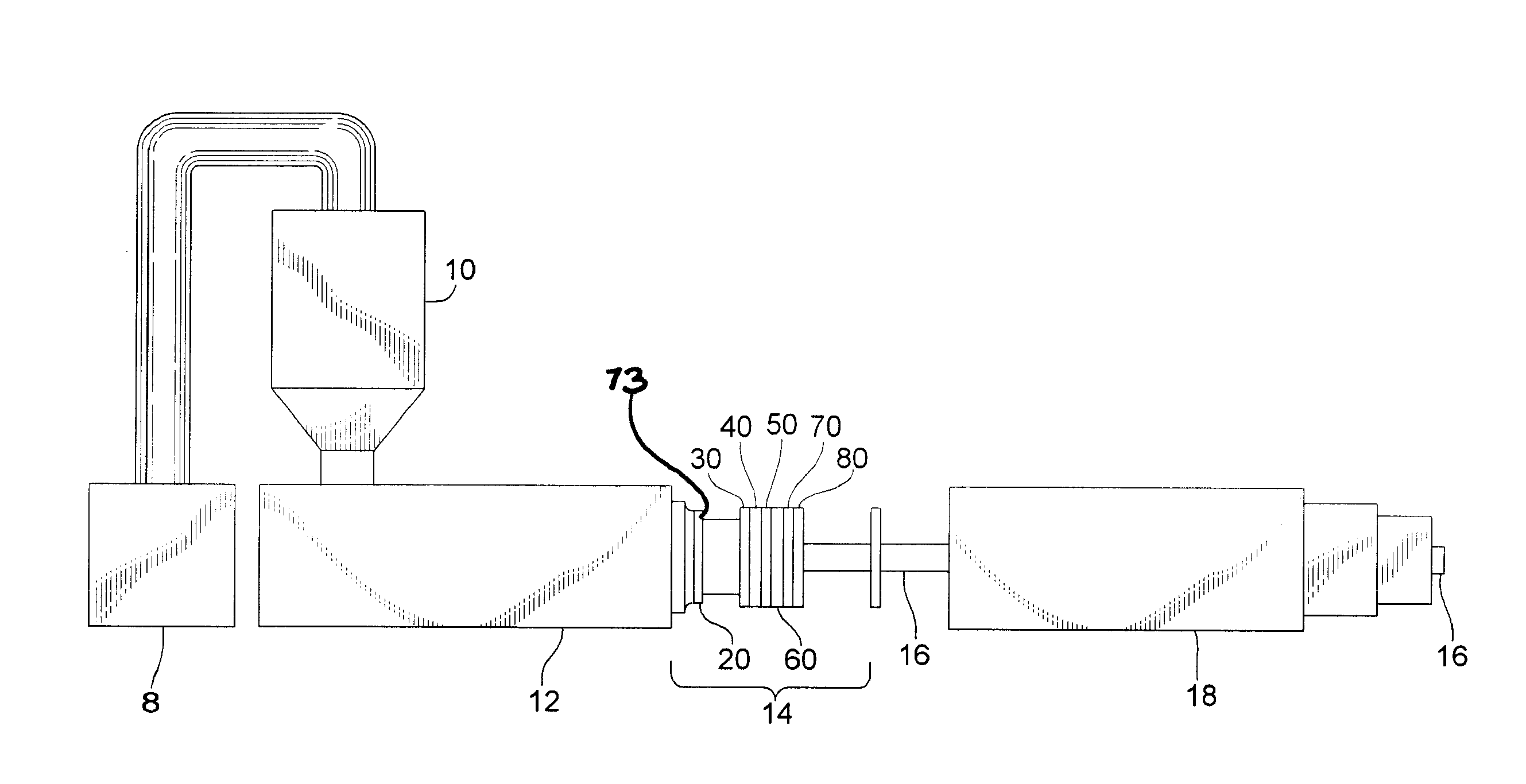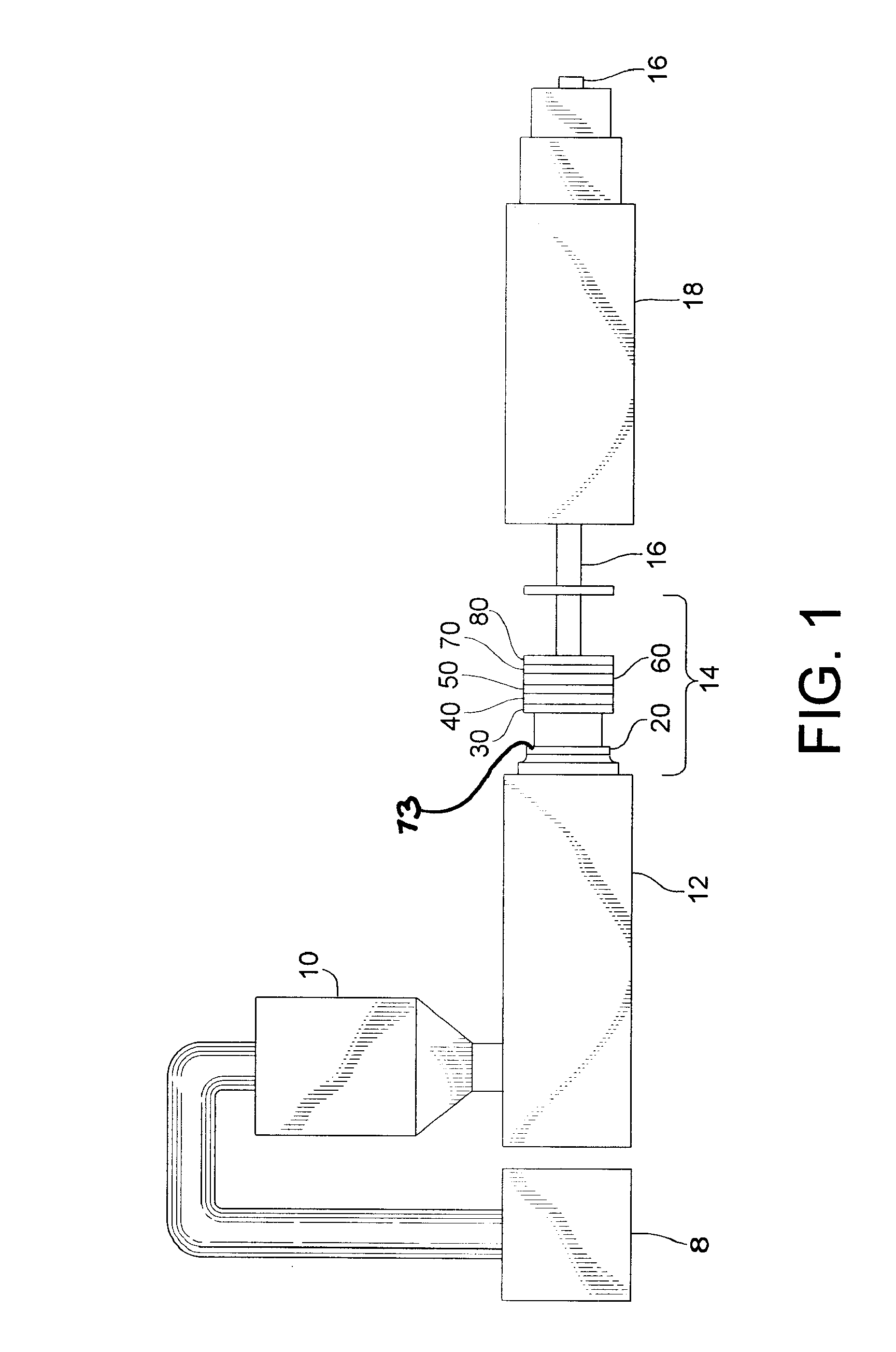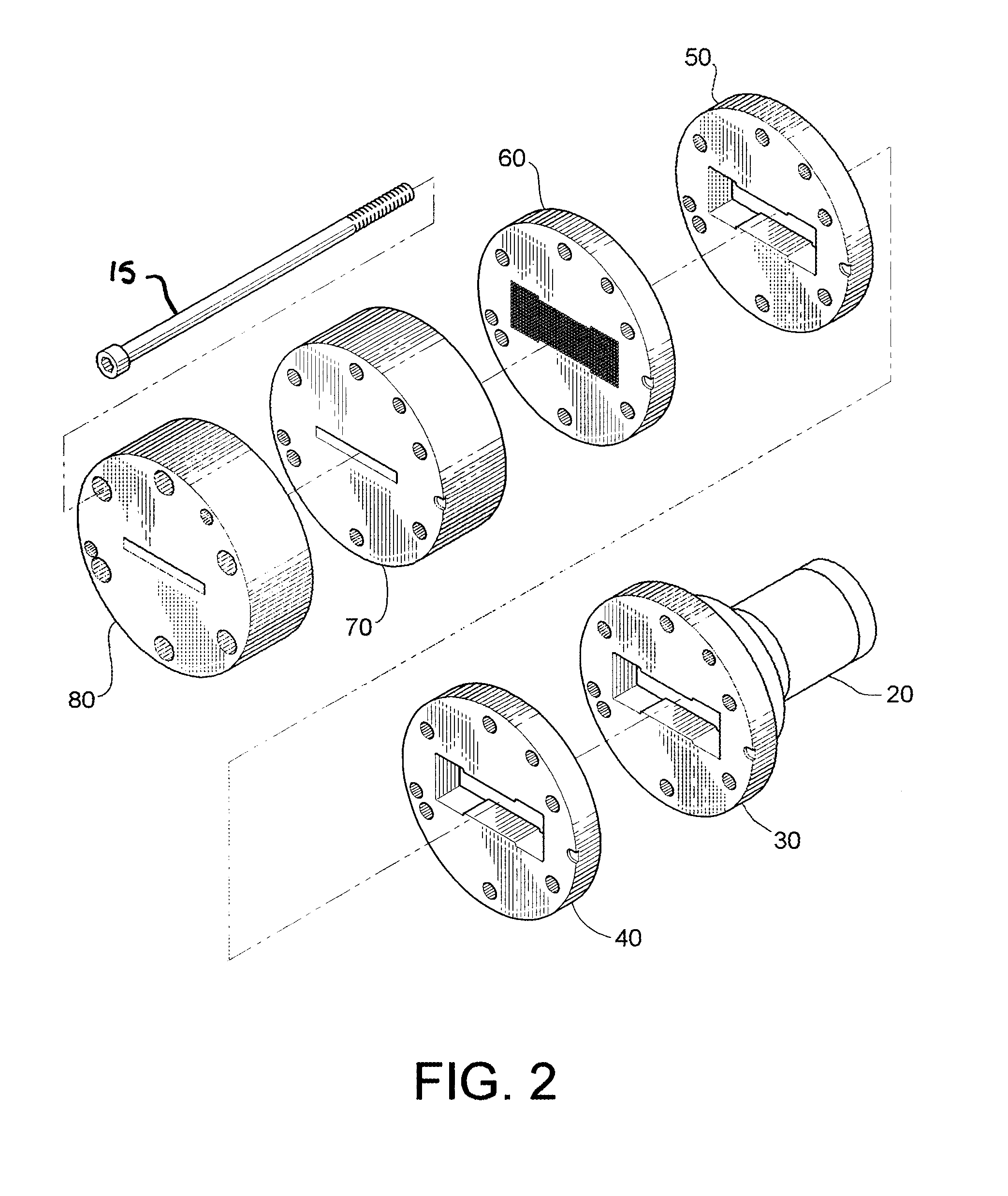Extruded cellulose-polymer composition and system for making same
a technology of cellulose and polymer, applied in the field of extruded woodpolymer composite materials, can solve the problems of difficulty in developing suitable pressure, reducing the density of cellulose composite materials, and introducing difficulty in addition of wood and/or other fillers to polymers, so as to achieve the effect of increasing pressure and reducing cell density
- Summary
- Abstract
- Description
- Claims
- Application Information
AI Technical Summary
Benefits of technology
Problems solved by technology
Method used
Image
Examples
example
[0135] Reference is now made to the following example.
[0136] A formulation containing 100 parts per hundred resin (phr) high density polyethylene and 67 phr wood flour has a consistency (Power Law constant) equal to 28.15 Pa-sec and a Power Law exponent equal to 0.36. These values may be determined by any standard method of determining the rheology of a polymer extrudate that behaves as a Power Law fluid.
[0137] Once these values are known they may be used to calculate the pressure produced when the extrudate flows through channels of various sizes and shapes. A general equation describing the pressure produced when a Power Law fluid flows through a channel of some simple cross section was developed by Kozicki (Kozicki, W., et al., “Non-Newtonian flow in ducts of arbitrary cross section”, Chemical Engineering Science, 1966, vol. 21, pp. 665-679: Δ P=LMRh[2Q(a+bn)RhAn]n
Where:
[0138]ΔP=the drop in pressure between the entrance of the channel and the exit of the channel.
[0139...
PUM
| Property | Measurement | Unit |
|---|---|---|
| Temperature | aaaaa | aaaaa |
| Fraction | aaaaa | aaaaa |
| Fraction | aaaaa | aaaaa |
Abstract
Description
Claims
Application Information
 Login to View More
Login to View More - R&D
- Intellectual Property
- Life Sciences
- Materials
- Tech Scout
- Unparalleled Data Quality
- Higher Quality Content
- 60% Fewer Hallucinations
Browse by: Latest US Patents, China's latest patents, Technical Efficacy Thesaurus, Application Domain, Technology Topic, Popular Technical Reports.
© 2025 PatSnap. All rights reserved.Legal|Privacy policy|Modern Slavery Act Transparency Statement|Sitemap|About US| Contact US: help@patsnap.com



